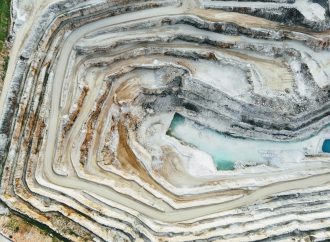Unless you’ve been living underneath a rock, you will have heard that global average temperatures were shattered this summer. July and August were the hottest months ever recorded (since record-keeping began in 1850), and September 2023 was orders of magnitude warmer than any previous September (see Figure 1). In all likelihood Earth’s average temperature this year will be hotter than any other since the origins of human civilization. What explains the current extreme heat? Does it represent the beginning of an unexpected acceleration in warming? What are we to do from a climate governance point of view? The answers to these questions have just gotten a bit more nuanced. Over the last few years, a slight wedge has emerged between two climate science urgency narratives.
Figure 1: Monthly Global Temperature Anomalies
Source: By Zeke Hausfather
On one hand we have what we might call “the observationalists”. They emphasize how the extreme heat we are currently seeing could easily fall within the expected boundaries of climate warming, particularly when we consider the historical trajectory of greenhouse gas (GHG) emissions to date, and the transition to a strong El Niño pattern after an extended La Niña. Yes, there are additional factors which have played a role in the present warming, but these are not as significant as the other two. In previous iterations of this La Niño – El Niño cycle – such as in 2015 and 2016 – we saw similar patterns of extreme heat records being broken (relative to the existing historical record) – but this was followed by a handful of years thereafter which did not break records (see Figure 2). The overall trend thus represents a constant pace of warming, not an acceleration.
Figure 2: Annual Average Global Surface Temperature
Source: Produced by author at ClimateReanalyzer.org
On the other hand, we have what I call “the accelerationists” (not to be confused with the political philosophy of accelerationism). This view is gaining traction, in part bolstered by support from Dr. James Hansen (the former NASA scientist famous for warning Congress about the dangers of climate change back in 1988). These “accelerationists” argue that existing climate models do not quite account for the way we have managed to reduce air pollution without reducing our consumption of fossil fuels. Burning fuels emits climate warming GHGs, but it also emits air pollutant aerosols which are harmful for our health – and these aerosols cool the climate (largely by seeding clouds which reflect solar radiation back into space). While climate models do account for a warming influence associated with a reduction of aerosols, accelerationists argue that these models assumed aerosol reductions would occur at the same time as GHG reductions – but that hasn’t taken place. The result, they say, is a steady increase in Earth’s Energy Imbalance. If this imbalance continues to grow, then we can expect an acceleration of global warming (denoted by the yellow area in Figure 3).
Figure 3: Global Average Temperature Anomaly with Predicted Acceleration in Warming
Source: Hansen et al. 2023
Some in these camps are becoming increasingly frustrated with each other. The observationalists think that the accelerationists are causing unwarranted fear and fomenting “doomerism” by making definitive proclamations about a future which is dynamic and depends on a range of human actions and natural variables. Further, they suggest it is far too early to tell whether warming is indeed accelerating – we need more time to observe, we need more science, and to consider all the complex factors involved. The problem of global warming is dire enough, they say, and we already know what we must do policy wise – stop burning fossil fuels and emitting anthropogenic Carbon Dioxide (while massively reducing other GHGs like Methane and Nitrous Oxide). Doing so will allow us to slow the pace of global warming, and eventually stop additional warming altogether.
Moreover, observationalists worry the accelerationist message lends itself to a program of geoengineering (via ‘Solar Radiation Management’, or SRM). This type of geoengineering could in turn work against the policy priority of massive cuts in GHG emissions. For instance, if an SRM scheme is successful in masking part of the heat of GHGs, then fossil fuel companies can use that to their advantage to say “hey, we don’t need to cut back on fossil fuels after all”. Worse, climate deniers can say “hey, the climate is not warming, there’s no need to reduce GHG emissions”. Moreover, there are health risks associated with SRM, not to mention other potential dangers – both known and unknown.
The accelerationists, in turn, are increasingly frustrated with observationalists for downplaying what they believe is a certain accelerated heat trajectory, and for ignoring evidence about Earth’s growing Energy Imbalance. They worry the observationalist message is closing doors to further research on the possibility of geoengineering (or other creative technological solutions). Moreover, accelerationists say the observationalists are being dishonest to the world by holding back the truth in some naïve hope that society will take cut GHG emissions fast enough to avoid catastrophe. Accelerationists add that if we continue on an accelerated warming trajectory, we could more quickly hit irreversible climate tipping points or see greater damage than if we take steps to mask some of that warming through a targeted program of SRM.
One thing both camps can agree on is that the Earth is presently warming quickly, with impacts which are already devastating, and so, urgent attention is required now.
While there is ongoing scientific investigation into this question, it will likely be years before we can look back in hindsight on today’s extreme heat with enough clarity to say whether global warming was accelerating in 2023. Even then, it is doubtful we will see an end to the debate about what to do about our predicament, and especially whether we should launch a geoengineering scheme to mask the warming impact of GHGs. One thing both camps can agree on is that the Earth is presently warming quickly, with impacts which are already devastating, and so, urgent attention is required now.













